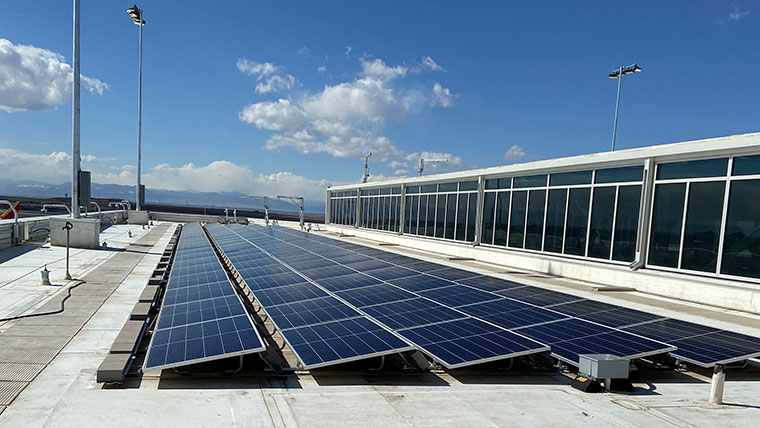Airports face a unique challenge when setting and pursuing sustainability goals. From the first moment you drive up to the airport, there are energy-intensive systems at work everywhere you look. A few clear examples include:
- Baggage handling systems
- Transportation Security Administration (TSA) checkpoints
- Flight information displays
- Internal trains and/or rails
- Charging stations and outlets
All these energy-intensive systems make it especially difficult to deliver energy-efficient airports that can meet goals for sustainability. Nevertheless, some airports are finding solutions and leading the way in sustainability to achieve high levels of green building rating certifications for their projects, such as Leadership in Energy and Environmental Design (LEED) Gold and Platinum level ratings.
How does an airport achieve a higher LEED rating?
LEED certification is achieved through a nine-category point system that measures the level of sustainability and overall environmental impact. The score determines which level of certification the project receives: Certified, Silver, Gold, or Platinum. The more points, the higher the rating a project can obtain.
The Energy and Atmosphere category typically plays a significant role in the overall credits earned. This category considers energy-efficient design strategies, the use of renewable energy sources, refrigerant types, metering, and more.
There are “easy” ways to reduce energy consumption:
- Using energy-efficient LED lights
- Installing controls on lights that sense people and natural light
- Optimizing the efficiency of heating, ventilation, and air conditioning (HVAC systems)
However, due to the heavy energy load carried at airports, these strategies alone are unlikely to be enough to reach LEED Gold or Platinum. More intense energy savings can be achieved with:
- Installation of photovoltaic (PV) arrays. This renewable system awards extra LEED points for credits in both the energy efficiency and renewable energy categories.
- Installation of preconditioned air systems (PCA) that generate power and air to address occupant comfort operations for on-the-ground airplanes without the use of jet fuel.
- Installation of a heat recovery system to take advantage of the waste heat and improve the efficiency of energy use.
The Water Efficiency category is also essential for an airport to achieve a high LEED rating. This category addresses indoor and outdoor water use in the pursuit of water conservation. Measures such as water-efficient water closets, water fountains, and automated sinks are relatively simple steps that go far towards achieving higher LEED levels.
In addition to creating the most water and energy-efficient buildings possible, airports have more tools at their disposal for pursuing a high LEED rating. Airports can:
- Complete a whole building lifecycle assessment (WBLCA) to analyze the environmental impacts of material selection and select lower embodied carbon materials.
- Obtain a LEED campus certification. This process allows for an organization with multiple buildings on a single site, such as airports, to apply the obtained LEED credits to all new LEED projects.
- Commission their projects. The LEED process awards credits to fundamental, enhanced, monitoring-based, and building envelope commissioning. The requirement includes mechanical, electrical, plumbing, and renewable energy systems and assemblies, as they relate to energy, water, indoor environmental quality, and durability.
DEN’s B-West LEED Gold rating
A recent example is Denver International Airport (DEN) announcing its B-West Concourse Expansion project achieved LEED Gold rating, a significant milestone in sustainability and energy-efficiency.



